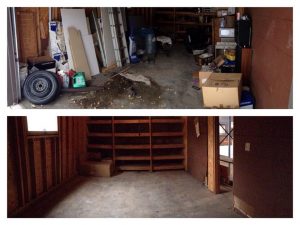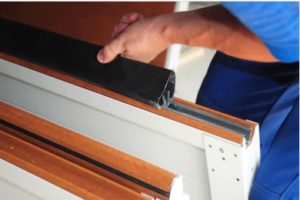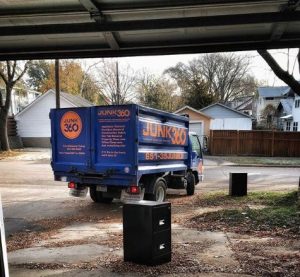Fall is in the air, which means it's time for Minnesotans to start thinking about winterizing. When considering where to start your winterizing process, we at Junk360 always recommend beginning with the garage.
Here’s some advice on how to organize and winterize the garage so you can haul the junk out and move the car in (before the first freeze).
Three Simple Steps for Organizing the Garage This Winter

- Safety First: Before winterizing that garage, drain the liquids and relocate the chemicals. Gas, paint, and fertilizer become damaged if frozen. Sandra Karnes recommends storing them in the basement in a plastic container to reduce the cleanup of any leaks. Dealing with liquids also means draining any gas-powered machinery. The gas in the lawnmower, for example, could get gummy if left all winter. When transporting liquids to another location, make sure to read all the labels. Some chemicals cannot be stored with others.
- Organize What’s Worth Keeping: During winter, garage space is premium. To maximize your available storage space, you need to organize. And that doesn’t mean just piling things on top of each other. Junk360 recommends taking everything out of your garage to start. Not only will this make winterizing the garage easier, but it forces you to go through everything. Is the wheelbarrow rusty and cracked? Junk it. Do you have three yard hoses? Maybe keep the best one and sell the others. Separate everything in the garage into three piles: keep, sale, and junk.
- Toss the Junk: Once you have your junk pile, give Junk360 a call. If you are stuck on or struggling with the previous step, Junk360 can help! Junk360 can winterize the garage by helping sort through large amounts of materials, organizing your supplies, and hauling away the junk.
From tractors to rugs, Junk360 is equipped to clear out your space, providing you the time and energy to begin the next step…
Winterizing the Garage
Finally, you can begin the “main course” of the garage winterizing process. While Junk360 is hauling away your recyclables and trash, you can start insulating. Here are a few things to keep in mind:
- Your garage loses the majority of warmth via the garage door. Improperly insulated garages typically match the temperatures outside, which is especially nasty for Twin Cities residents.
- How you insulate the garage door depends on whether you have wood-and-panel doors, flat doors, or steel doors. Here’s a helpful post that describes how you can insulate each of the various types.
- Beyond the doors themselves, winterizing the garage means installing a weather seal, covering and sealing your outlets and switches, and covering your pipes.
- Once the snow starts, you’ll be dragging in all sorts of mud, salt, sludge, and ice into your garage. Sealing your garage floor guarantees that muck won’t settle in to stay.
After you’ve organized, removed the junk, and winterized, it’s time to store. Park your car in your freshly winterized garage and analyze how much space you have left. Pay special attention to the type of space you have left.
- Do you have cabinets you can fill?
- Is there wall space to install shelving or a slatwall storage system?
- Check what you’re planning to store. Do you have the space to keep all of it?



